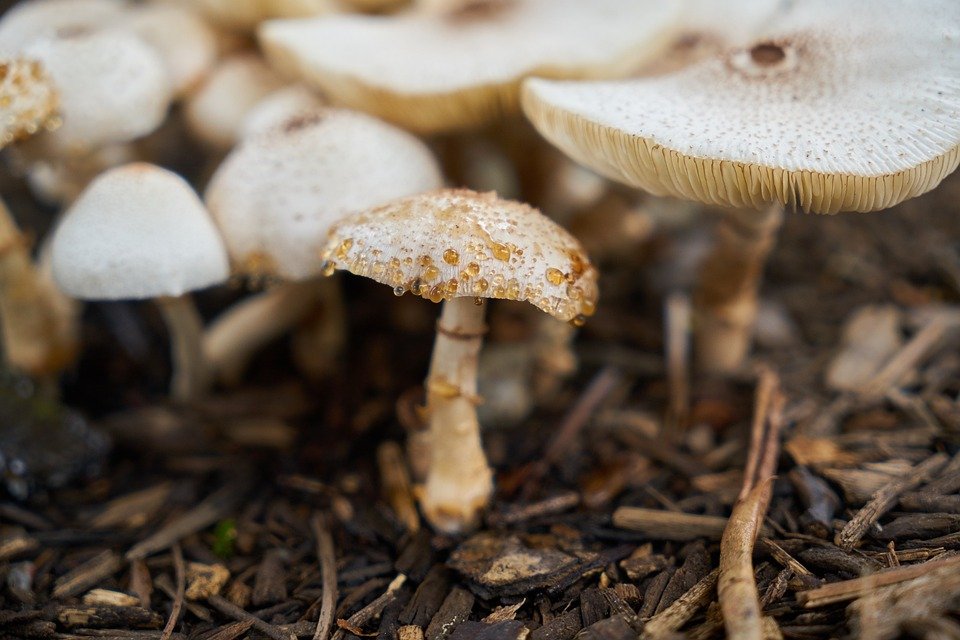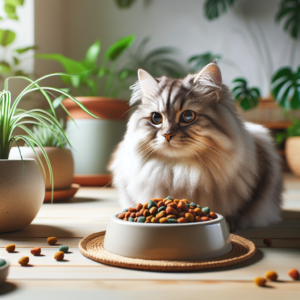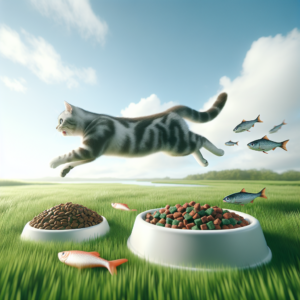
Cats are known for their curious nature and love for exploring their environment, which sometimes leads them to consume things that are not meant for them. As responsible pet owners, it’s crucial to be aware of the foods that can pose serious health risks to our feline friends. This article delves into the top foods that are toxic to cats, explaining why they are harmful and what symptoms to watch for.
Chocolate
Chocolate is a popular treat among humans, but it is highly toxic to cats. The primary culprits are theobromine and caffeine, both of which are stimulants. Cats are unable to metabolize these substances effectively, leading to potential poisoning.
Why Chocolate is Harmful
Theobromine and caffeine can cause various symptoms in cats, such as increased heart rate, restlessness, tremors, and even seizures. In severe cases, chocolate ingestion can lead to cardiac arrest or coma.
Symptoms to Watch For
If your cat has ingested chocolate, you may notice symptoms like vomiting, diarrhea, hyperactivity, and abnormal heart rhythms. Immediate veterinary attention is essential to prevent life-threatening complications.
Onions and Garlic
Onions and garlic, whether raw, cooked, or powdered, contain compounds that can damage a cat’s red blood cells, leading to a condition known as hemolytic anemia.
Why Onions and Garlic are Harmful
These foods contain thiosulfates, which cats cannot properly digest. When consumed, thiosulfates can cause oxidative damage to red blood cells, reducing their ability to carry oxygen.
Symptoms to Watch For
Signs of onion or garlic poisoning include lethargy, weakness, reduced appetite, pale gums, and dark-colored urine. If you suspect your cat has consumed these foods, seek veterinary assistance promptly.
Grapes and Raisins
While the exact toxic mechanism of grapes and raisins in cats is not fully understood, these fruits can cause kidney failure in some felines.
Why Grapes and Raisins are Harmful
Even small amounts of grapes or raisins can trigger adverse reactions in cats, potentially resulting in acute kidney injury. The toxic reaction seems to be idiosyncratic, as not all cats are affected, but the risk is significant.
Symptoms to Watch For
Symptoms of grape or raisin toxicity include vomiting, diarrhea, lethargy, and reduced urine production. Immediate intervention by a veterinarian can help mitigate kidney damage.
Alcohol
Alcohol is dangerous for cats, just as it is for humans, but even tiny amounts can lead to severe health issues in felines.
Why Alcohol is Harmful
Cats are much smaller than humans, making them more susceptible to alcohol poisoning. Alcohol affects a cat’s liver and brain, similar to how it affects humans, but the consequences are much more severe in cats.
Symptoms to Watch For
Signs of alcohol poisoning include vomiting, disorientation, difficulty breathing, and in severe cases, seizures or coma. If you suspect your cat has ingested alcohol, urgent veterinary care is necessary.
Xylitol
Xylitol is a sugar substitute commonly found in sugar-free gum, candies, and some baked goods. While safe for humans, xylitol is highly toxic to cats.
Why Xylitol is Harmful
When ingested, xylitol can cause a rapid release of insulin, leading to hypoglycemia (low blood sugar). This can be life-threatening if not addressed quickly.
Symptoms to Watch For
Symptoms of xylitol poisoning include vomiting, loss of coordination, seizures, and lethargy. Prompt veterinary intervention is critical to stabilize blood sugar levels and prevent liver damage.
Raw Eggs, Meat, and Fish
While some pet owners advocate for raw diets, feeding raw eggs, meat, or fish to cats can pose significant health risks.
Why Raw Foods are Harmful
Raw eggs may contain salmonella or E. coli, which can lead to food poisoning. Additionally, raw eggs contain avidin, an enzyme that can interfere with the absorption of biotin, a B vitamin essential for skin and coat health. Raw fish, on the other hand, may contain thiaminase, an enzyme that breaks down thiamine (vitamin B1), leading to thiamine deficiency.
Symptoms to Watch For
Signs of food poisoning from raw foods include vomiting, diarrhea, and lethargy. Thiamine deficiency can manifest as neurological problems, such as loss of appetite, seizures, and even death if untreated. Cooking these foods eliminates these risks.
Dairy Products
While many cats love milk and cheese, most adult cats are lactose intolerant, meaning they lack the enzyme lactase needed to digest lactose, the sugar found in dairy products.
Why Dairy is Harmful
Consuming dairy can lead to gastrointestinal upset in cats, resulting in symptoms ranging from mild to severe.
Symptoms to Watch For
If your cat consumes dairy products, you may notice symptoms like diarrhea, vomiting, and abdominal discomfort. It’s best to provide lactose-free alternatives or avoid dairy altogether.
Conclusion
Understanding the foods that are toxic to cats is an essential part of responsible pet ownership. While this list covers some of the most common toxic foods, it’s important to remember that other household items, such as certain plants and medications, can also pose a threat. Always consult with a veterinarian if you’re unsure about what foods are safe for your cat, and keep hazardous foods out of reach to ensure your feline companion’s health and safety. By being informed and vigilant, you can help your cat live a long, healthy, and happy life.
#ChatGPT assisted in the creation of this article.







